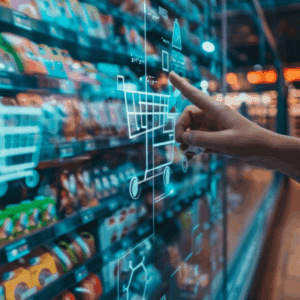By Nathan Brixius, Market6

Analytics, the use of computer models to produce insight for decision making, is increasingly the key to competitive advantage in grocery retail. In this new world, data is the fuel that powers the engines of data science. How can consumer goods suppliers and retailers identify and use data to produce business insight?
It all starts with sales, of course. Ideally, suppliers and retailers would have access to single line item in every single sales transaction for all store locations for the entire history of the retailer. Any other view of sales, for example, divisional level sales of baked goods, can be derived from these tiny atoms. Unfortunately it is impractical or impossible for many firms to collect and maintain data at this level of granularity, so they often have to get by with incomplete or summarized sales data. The good news is that an analysis of even imperfect sales data often reveals insights about products, store locations, and general trends. Start with the fundamentals.
The next step is to connect sales with other relevant data sets to answer business questions. It’s easy to become overwhelmed by the sheer number of potentially relevant data sources: Deliveries, store audits, advertising, price, promotions, social media, weather and so on. The savvy consumer goods executive always returns to business value, keeping basic questions in mind: Who, what, when, where, why and how.
Often “how” boils down to supply chain considerations. Understanding and optimizing the path to purchase is a goal of every consumer goods player, but often this path is long and complicated, involving suppliers, distributors, category managers, and ultimately consumers. The supply chain suggests several interesting data sets: product information down to scan or SKU level, distribution center receipts and shipments, store deliveries, stocking, and order information.
Decisions regarding such information are at the heart of the collaborative process which drives results for suppliers and retailers. Yet despite the proven benefits effective collaboration and the value it creates remains elusive for most. Supply chain data, along with appropriate process and software tools, are key to collaborative tools such as lost sales assessment, out of stock measurement and fulfillment planning.
Supply chain data describes how products move from production to sale, but say little about why sales happen. The standard levers of price, promotion, and advertising are all obvious data sources, and can often be collected through collaborative effort between consumer goods retailers and suppliers. Looking beyond the obvious leads to additional data sources that relate to longer term forces that affect sales in subtle but important ways. For example, category trends such as the sudden rise of Greek yogurt and the continued growth of organic and natural foods can be tracked through online sources such as Google Trends and various third party outlets.
Brand awareness is also known to be an important sales driver. For example, the long term effects of television advertising were recently estimated by Nielsen Catalina Solutions to be twice that of the immediate short term bounce.
The measurement of brand equity is difficult, but not impossible, especially with sentiment information that can be mined from online sources such as Facebook, Twitter, and online forums.
Sophisticated machine learning tools can be used to understand how consumer disposition changes over time, and how it affects the bottom line. While each source provides interesting insights in its own right, the full promise of data is realized for consumer goods suppliers and retailers when these sources are marshaled together.
For example, weather data is, strictly speaking, useless to a retailer when viewed in isolation. That’s why Market6 joined weather data with store sales to quantify how sales rise in the days before a big snowstorm and decrease as it hits. Retailers see for themselves that two inches of snow yield very different behaviors in Chicago, Charlotte and Seattle.
Further, joining with item level sales yields insights about “stock up” items before big storms, beyond the obvious ones such as bread and milk.
The result of more relevant data sources joined together — increasingly streamed in real time — is consumer goods innovation. Armed with the insights provided by smart data, retailers and suppliers are more profitable and consumers are more satisfied than ever before.
As Vice President of Analytics, Nathan Brixius drives Market6’s analytics product strategy and technology vision. His team provides the advanced analytic expertise and applied practical techniques that form the foundation for analytics across Market6’s solutions.






